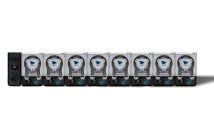
We all get excited when un-boxing a new aquarium that has been on order for several weeks. It’s usually the aquarium of our dreams, as the dimensions and overall layout of the setup were thought about for months prior to even ordering the tank. You finally decide on the perfect spot in your home, move the stand into place, and get the aquarium up onto the stand that perfectly matches the color of your other furniture. Maybe you start assembling the dream tank right away, or maybe you’re too tired from moving the beast from the fish store to your home and put it all off until the next day. Either way, sometimes things go smoothly, and then there are those times when the big let down shows itself.
Continue reading below for more pictures and tips on inspecting your aquarium prior to taking delivery.
Very recently, a good friend purchased a very large tank from a very reputable aquarium manufacturer. The tank, ordered through a local fish store, was delivered late in the evening and was moved straight from the freight vehicle to the aquarist’s truck. Though a brief visual inspection of the aquarium was performed prior to signing the paperwork and driving away, a defect (or two) was noticed in the aquarium once it was inside the hobbyist’s home and on the stand. The issues were a sizable gap in one of the trim joints and a not-so-great silicone seam on the back glass panel. For anyone attempting to house several hundred gallons of saltwater in their house, this can be a huge red flag. Will the issue affect the tank in the short term? How about long term? Will the seam eventually fail? Is there an underlying issue, of which these issues are just the tell-tale signs?
Not too many aquarists are willing to take that risk. So, my suggestion for this hobbyists would be to load the massive aquarium back into the truck and haul it back down to the aquarium store. I would much rather have a near flawless aquarium than one with a few glaring flaws that could, maybe on the off chance, spell disaster. The lesson in all of this is, no matter what, you should inspect the aquarium you are purchasing up and down prior to taking it home or signing any kind of documentation. I realize some things may go unnoticed at first (especially if you’re picking up your aquarium at night), but the more thorough you are, the less likely you’ll be to encounter an issue. Bring a flashlight, a magnifying glass, or whatever other tool you can use to help you in your inspection. At least this way, if there is a problem, the manufacturer can’t blame you for it and will have to make it better.






